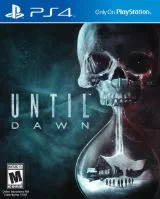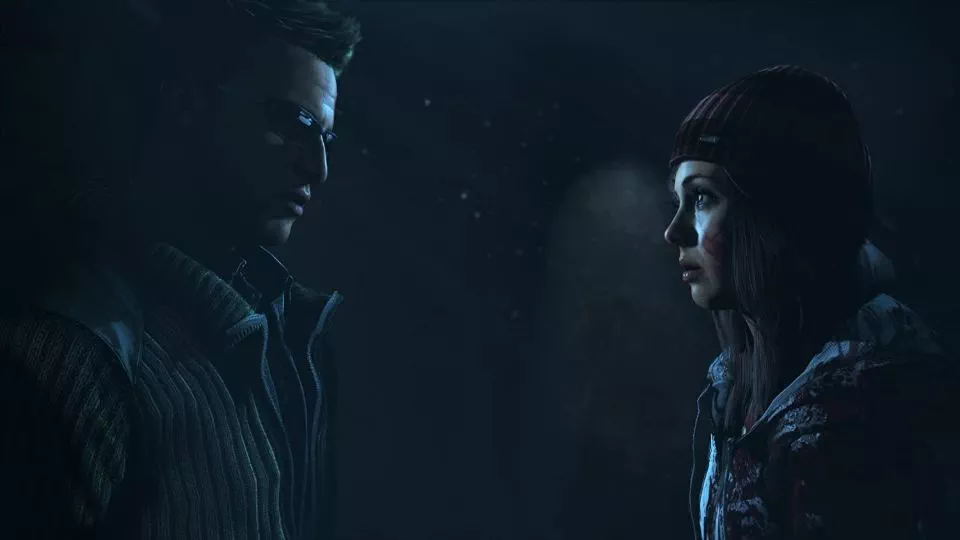Life Is Strange - PS4 - Gam...
It is the kind of episodic video game that wa...
By Adonis Monahan3403

0

As evidenced by their minimal attempts at launching an adequate marketing campaign, Sony was not expecting consumers to be enthusiastic about Until Dawn when it was first released in 2015. However, the PS4 exclusive exceeded expectations. With hundreds of playthroughs on YouTube, the game was treated as one of the most refreshing releases of the year.
The unlikely success of Until Dawn has paved the way for Supermassive Games to develop more releases that depend on the same formula. Even after the release of Man of Medan and Little Hope, Until Dawn is still regarded as the studio’s best game so far. So, is Until Dawn really worth the hype? This is what you are going to find out in this review.
Let’s start with the most important aspect of any game in the same genre as Until Dawn: the plot. When playing a game that is marketed as an “interactive drama,” the focus always falls on the storyline. Put simply, Until Dawn is a horror game that follows a group of teenagers who are connected by past trauma. After a prank goes horribly wrong and results in the death of two of their friends, they return to the cabin they spent their vacation in the year before in hopes of gaining closure. However, when strange things start happening, they realize that they are in grave danger.
Obviously, the developers have wanted to play on the “dumb teenagers vacationing in an abandoned house” and the “cabin in the wood” tropes that have been a hallmark of the horror genre as a whole, but what sets Until Dawn from traditional slasher movies is its plot twists. The story includes several red herrings, which undoubtedly makes players as confused as the group of friends they are controlling.
At first, you may suspect that there is a serial killer on the loose, but after a while, the plot focuses on urban legends and monsters. This shift is a bit surprising at first, and to be honest, the slasher-esque nature of the first few hours of the game is more enjoyable than the big reveal towards the end.
Even though we cannot really call Until Dawn’s narrative “sophisticated,” it is clearly superior to the many other attempts that came before it. When compared to Heavy Rain, the best example of the interactive story-based games that were released before Until Dawn, Until Dawn has a better narrative, considering the lack of glaringly obvious plot holes.
Most importantly, Until Dawn succeeds at maintaining its tense atmosphere and scary ambiance from the first scene to the very last one, which provides players with an incomparable immersive experience. Moreover, the variations the storyline has based on your choices makes it a worthwhile investment since you will be able to get more than one playthrough out of the game.
Overall, Until Dawn has an endearing plot that does not take itself too seriously. While it is not as strong as the narrative of other games, especially RPGs, it still holds its own well enough.

The gameplay is where most of Until Dawn’s flaws start to show. The game relies on players making choices to further the plot. Most of these choices pertain to the dialogue, which is not really strong in the first place. Most of the time, it reads and sounds like it has been ripped off from every cheap slasher film out there.
Furthermore, your choices shape the characters’ relationships with each other, which determines their fate in the end. Treat a character well enough and they will come to your aid when needed. Otherwise, they may leave you for the dead! You also shape the characters’ attributes. If you are curious about how the characters’ personalities have changed throughout the game, this can be easily checked from the pause menu.
Dialogue aside, you still need to complete quick-time events (QTEs) by pressing specific buttons. If you miss these QTEs for whatever reason, the character you are controlling might meet an untimely, grisly end. Fail enough QTEs, and you can kill off the entire cast.
Of course, this concept is not entirely new, and while it may seem like an incentive enough to be careful when playing, it becomes clear that some characters have heavy “plot armor” that prevents them from getting killed early on. So, there is still some linearity to the game; you are not completely free to do as you please.
Another key aspect that sets Until Dawn’s mechanics apart from other games’ is the use of the PS4 controller’s motion controls. In this game, it is known as the “Don’t move” mechanic. Because in every horror movie, characters must stay quiet in order not to attract unwanted attention, Until Dawn incorporates your PS4 capabilities to create a truly tense experience.
In these sequences, you must not move your controller at all to avoid alerting the monsters to your hiding place. Again, it is a great concept on paper, but unfortunately, it is a bit buggy; some players have reported that their controllers detect motion even when they are completely still, causing the characters they are playing as in these sequences to die.
Until Dawn’s heavy use of the butterfly effect for branching has always been front and center. As we’ve mentioned before, your choices matter, so you may be pleased to know that you can collect “totems” throughout the game to glean some insights on what might come to pass.
This mechanic is a bit controversial, seeing that some players like to have a few hints along the way while others believe that the addition of totems just spoils the whole plot. Regardless of what you think of them, these totems are not integral, so you do not have to pick them up to advance in the game; you can just ignore them if you prefer to have a completely spoiler-free experience.
Sony and Supermassive Games have both advertised Until Dawn as a game that includes hundreds of endings depending on your choices. However, this is unfortunately an over-exaggeration. While the game has a lot of variations, the ending and end-credit scenes are essentially the same.
All that is subject to change is the number of characters that have survived. You may also be able to get a bonus post-credit scene, but that is just about it. Most of the variations happen in the middle of the game, not the end.
Until Dawn is far from the perfect game, but it excels in two departments: graphics and voice acting. It is simply a beautiful game with greatly designed locations that ooze with creepiness. All the main locations including the cabin, woods, and mines are all very detailed. So, if graphics are a big factor that you always consider when buying games, rest assured that Until Dawn is a perfect purchase.
While some of their expressions may look a bit stilted at times, the characters also look super realistic, which is always a good addition to this type of game. Finally, the voice acting is simply on-point, with Rami Malek (Josh Washington) and Hayden Panettiere (Sam Giddings) giving a truly captivating performance.
If you have not played Until Dawn yet, be sure to grab it. Although its gameplay is not a big part of it and it sometimes feels like a movie disguising itself as a game, Until Dawn provides an amazing experience. Given its superb visuals and voice acting, it might be right up your alley if you are critical about graphics or are not really much of a gamer. It also costs only $20 now, so it is a great option if you currently do not have a big enough budget for full-priced games.
Updated 4 years ago